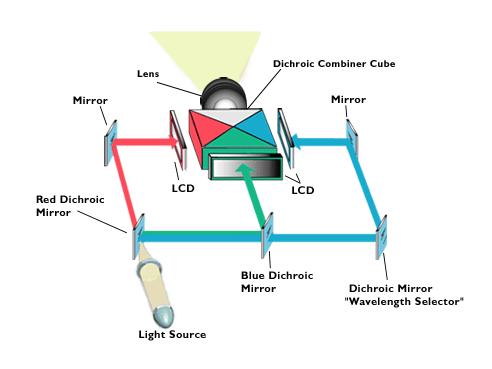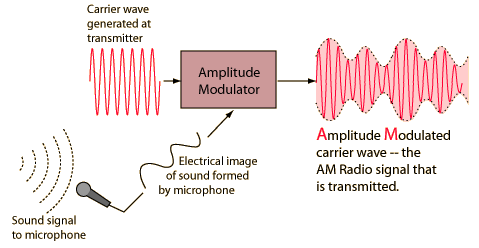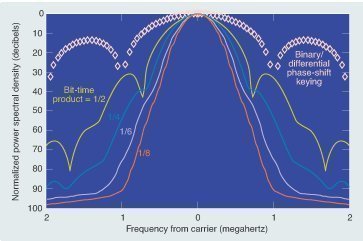LCD projectors work by using three liquid crystal panels, a lamp, a prism, and filters to create the image on the screen. The lamp provides white light that passes through a polarizing filter. Polarizing works by accepting light that is traveling on the same plane. All other light will be blocked.
From the polarizing filter the light is then passed through a series of dichroic mirrors. Dichroic mirrors work by only allowing certain colors in the light spectrum to be reflected, while others pass through. The dichroic mirrors in LCD projectors separate the light into the three primary colors, green, red, and blue.
These three colors are then sent to a separate LCD panel; remember there are three of them. From there the LCD panels send the light through the dichroic prism which recombines the light and sends it out the main lens in the LCD projector to the surface against which it is projected. Each LCD is only capable of controlling one color. So if you were to see a picture of a red plane against a blue sky, the green LCD would block the light from passing to the dichroic prism and out the lens.

LCD panels in LCD projectors work by allowing the polarized light to travel through a pane of glass into the liquid crystal inside the display. The liquid crystals bend the light, and it is traveling on a different plane then when it entered through the polarizing filter. If you apply an electrical current to the liquid crystal they will align, allowing the light to pass through on the same plane as when it entered. If you add a second polarizing filter at the other end of the liquid crystal you can then effectively block all light from passing through. Each LCD panel has a separate system to control the electrical current that passes through the liquid crystal, allowing each to be controlled individually.
The resolution, or how sharp the image is, of each LCD is determined by the number of cells which are called pixels, with the higher the number of pixels meaning more clarity to the image. Each LCD panel also has the ability to control what color each pixel will be in that particular panel so that when all the light is recombined at the dichroic prism, it will be the right color. Think of it working the same way that the old dot matrix printers used to work. They would combine dots of the three main colors to provide the desired color. This is the same way that LCD panels work.




R.N.Mital
Tha input signal to a LCD projectorr is provided by a Pendrive or a CD connected to a Computer which processes the signal and then feeds it into the LCD Projector, which projects it. I would like to know whether projectors are available in which the pendrive or CD can be directly connected? This avoids the use of the Computer (Lap top) which have so many other facilities which are not required for this application.
If the above is not available then a external simple device capable of processing the signal for the Projector can also serve the purpose. Are they available?.
Can the signal from an ordinary CD player be fed into a projector?.